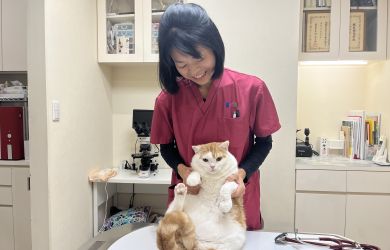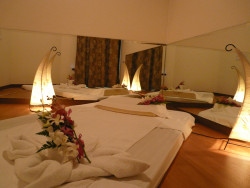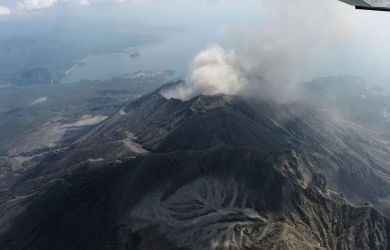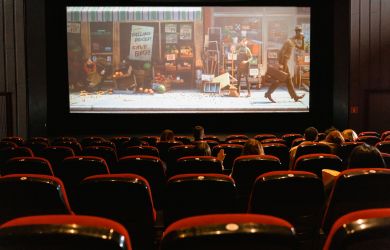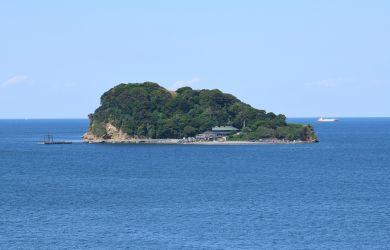
Originally published on metropolis.co.jp on May 2011



 Kanji, baseball, Buddhism and cell phones—Japan is famous for importing things and making them its own. Acupuncture is no different. The Chinese practice of piercing the body with metal needles to treat disease came to this country about 1,500 years ago. The techniques have developed drastically over the centuries, and what is done by practitioners in Japan today is as different from Chinese practices as kanji and kana are from the writing system now used in the People’s Republic.
Kanji, baseball, Buddhism and cell phones—Japan is famous for importing things and making them its own. Acupuncture is no different. The Chinese practice of piercing the body with metal needles to treat disease came to this country about 1,500 years ago. The techniques have developed drastically over the centuries, and what is done by practitioners in Japan today is as different from Chinese practices as kanji and kana are from the writing system now used in the People’s Republic.
Despite its long history, Japanese acupuncture stands at a crossroads. The field relies on the older generations for its patient base, and as the natural health boom of organic food and yoga sweeps through the younger generations, acupuncturists have so far largely failed to identify their ancient therapy with the new way of living.
In the West, the best thing acupuncture has going for it is its association with youth. Despite its 2,500 years of age, there is something cutting-edge about Oriental medicine. Emily Smith, an American practitioner who has acupuncture degrees from both the US and Japan, says the Japanese industry is stagnant. “Especially after the March 11 earthquake… acupuncture probably isn’t a priority for many people now. Of course this is unfortunate because there are very few other modalities that so quickly and effectively relieve tension and stress.”
Tokyo acupuncturist Rika Mizuno is one practitioner trying to take the field in a new direction. “We’re trying to promote the industry, but it’s not easy. You see more articles on natural, holistic or traditional medicine in young people’s magazines, but when it comes to actually visiting an acupuncturist, people rely on recommendations from family and friends. It’s hard for us to really do much as an industry, so it’s really just a grass-roots effort by each individual practitioner.”
Modern times
Acupuncture in China and Japan was rocked by the 19th-century importation of Western medicine. Traditional medicine was shunned (and even made illegal at times) as the East became obsessed with Western modernization. Interestingly, political changes that proved tragic for millions were salvation for acupuncturists and herbalists. The rise of Japanese nationalism in the 1920s brought blanket approval for traditional ways, and Mao Ze Dong declared Chinese medicine a national treasure in the 1950s.
But in just the last 60 years, acupuncture in the two nations has diverged significantly. With strong state support, Chinese practitioners took a galaxy of disparate family lineages and forged them into a cohesive theoretical and practical system. This process hasn’t been perfect—critics say the medicine became too homogenous, while communist atheism squashed the spiritual aspect—but “Chinese acupuncture” is now relatively easy to define. Not so for Japan. There are many prominent schools of thought, but they lack a foundation unifying them as “Japanese acupuncture.”
This is not to say Japanese needling has deteriorated. Technique-wise, there are people with incredible skills. “Treatments here, like many aspects of the culture, rely on the ‘less is more’ attitude. Trusting that the body really can regain its own natural balance with consistent, appropriate stimulation is the beauty of Japanese acupuncture,” says Smith.
There is also a long history of the visually impaired becoming acupuncturists and massage therapists, and influencing development. Traditionally, there are four aspects to diagnosis—asking, touching, looking and smelling, with asking the most prominent—but blind practitioners have helped asking questions take a backseat in favor of palpating the body for areas of tension and pain.
This emphasis on understanding a patient’s condition through objective investigation—versus relying on their subjective opinion—has been gaining popularity in the West for the last 10 years. Previously, most acupuncture outside Asia was Chinese-style and this is still most commonly taught. But slowly, Japanese techniques have come to be seen as more refined; they require more skill and awareness, but provide information about the patient at a more direct and deeper level.
Western upstarts
Tokyo acupuncturist Hidenori Tomita says that only seven percent of Japanese people have experienced acupuncture. While this looks good compared with the estimated one percent of Americans, the trends are telling. Acupuncture in the West has grown from virtually nothing over the last 35 years. What began as a sidebar to the hippie movement is now a professional field with licensing, hundreds of schools, a presence in hospitals and institutes, and growing insurance coverage. In California, ever on the vanguard, acupuncturists can even be primary care providers, which bestows both prestige—and exposure to litigation. In Japan, there has been little or no growth.
“A lot of people here go into acupuncture because they think just getting some kind of license will earn them money. Very few are interested in yin-yang. Recently, people have realized it’s not so easy to put food on the table as an acupuncturist, so school enrollment is going down,” Tomita says.
Mizuno, who has lived in the US for many years, says acupuncture in the West has the advantage of novelty. “Because it’s not a traditional medicine, they’ve been able to develop the field more freely and practically. For us, it’s not easy to change the image of something we’ve had for so many years.”
Japanese acupuncture has largely missed the natural health boat. Yoga studios and LOHAS restaurants are common as crows in Tokyo, but ask younger Japanese folk what they think about acupuncture and they’ll probably tell you their grandmother gets it for arthritis. The atmosphere of most clinics here tells you a lot: fluorescent illumination, monochrome décor, steel, plastic and linoleum. A typical office in the US has soft lighting, relaxing music, plants and comfortable beds. Some overdo the new-age motif, but it definitely feels miles away from the local hospital.
Japan’s acupuncture has also become removed from the mind-body-earth integration of ancient Chinese philosophy. Outside Japan, acupuncture is used for many and varied illnesses—stroke recovery, high blood pressure, drug addiction and more—while here it is mostly used for pain. Mizuno says most acupuncturists don’t ask about emotional issues. “Culturally, Japanese still hesitate to be open about these things. I was even told not to accept patients with emotional disorders by a number of teachers at school. But we should definitely try to make people aware that acupuncture can work for both emotional and physical problems. In the long run, it’ll really help our industry.”
A new hope
As anyone versed in Oriental medicine knows, the only dependable element is change. Smart young acupuncturists like Tomita, Mizuno and Smith were bound to capture this huge opportunity. According to Mizuno, most Japanese underestimate acupuncture—if they think of it at all. “Acupuncture is a natural way to bring out the body’s own healing power. It treats the underlying causes of disease and can even make profound changes on an emotional level.”
Smith teaches yoga in her Tsukuba clinic in addition to needling patients, while Tomita painstakingly crafted his space to reflect harmony with nature. There can be no doubt that the steel-and-linoleum clinics will find tough competition from this new breed. These practitioners also seem to truly believe in their practices; something that can’t help but rub off on patients.
Most likely, their hard work and dedication will pay off in the long run, though Mizuno still wishes for a little help. “If only there was some trendy TV drama starring Kimutaku about a cool acupuncturist curing everyone and everything in sight.”
